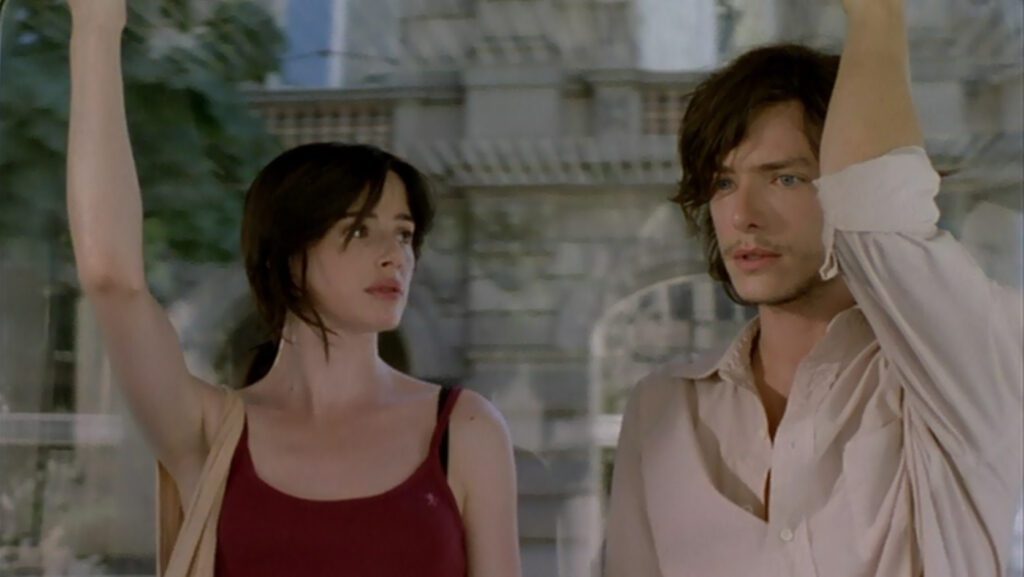
In the City of Sylvia
2007, directed by José Luis Guerín
It can hardly be neutral that Spanish filmmaker José Luis Guerín chose to set In the City of Sylvia in Strasbourg. The city makes an attractive setting, but dozens of other European cities would have served just as well. Strasbourg has a more pan-European character than most of the alternatives, having switched nationality a few times in recent centuries. It touches the German border on the Rhine River, and both French and German are widely spoken, making it a fitting correlative to the ambiguous nationality of an internationally co-produced film whose title is displayed once in French and once in Spanish. More significantly, Strasbourg is the seat of the European parliament, the people’s capital of Europe more than the administrative or judicial capitals Brussels and Luxembourg. To top it off, the character who most personifies the European Union appears to be – both ironically and appropriately – an African immigrant, a black street vendor with an EU flag parasol who keeps saying “Euros”.
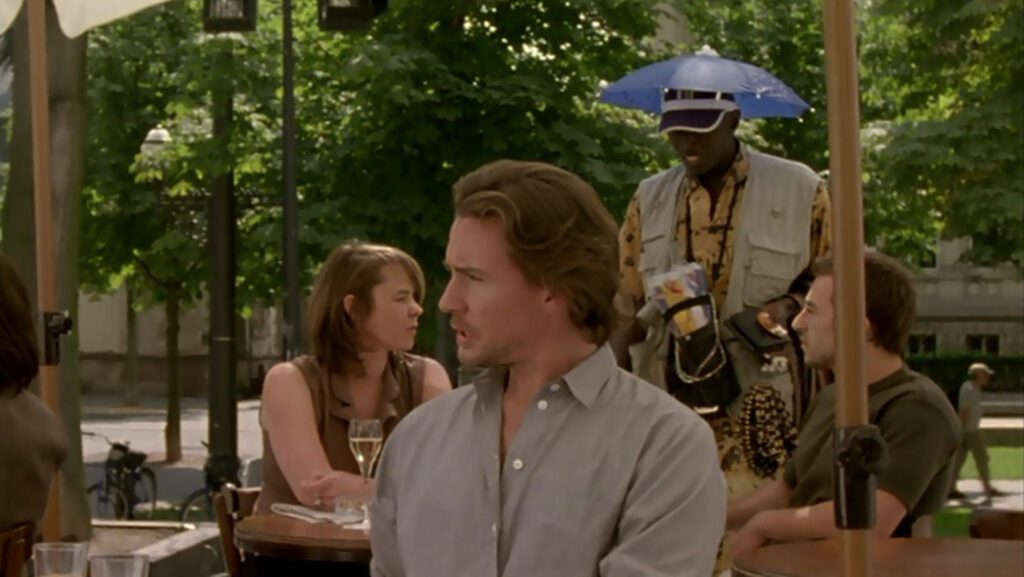
In numerous ways In the City of Sylvia is a portrait of the European Union, a snapshot of Europe at a moment of peak optimism, only about a year before the Greek debt crisis and the Great Recession, and nine years before the Brexit vote. Though set squarely in the present, the film constructs a rounded vision of time. To start with, it tours eight centuries of European history through music, architecture, and painting:
- The music ranges from the medieval bells of Strasbourg Cathedral to the Renaissance choral music of Josquin Desprez, Romantic piano music coming out of a window, a fragment of Nabucco hummed in a street plaza, folk music at the café, a street accordion, and modern dance music in the Aviators nightclub.
- The gothic cathedral is also the earliest part of a compressed history of architecture that includes Fachwerk houses, Renaissance Bürgerhäuser, 19th century historicism, postwar 20th century buildings, and the futuristic tram.
- Instead of giving us a literal history of European painting, the film mimics the perennial subjects of fine art. The cathedral’s rose window forms a halo around the lead actress like a saint in a medieval painting. The hotel room table is arrayed with objects and fruit like a still life. The bathing women at the end of the second day are a timeless subject for painters. There are landscape shots, portraits of faces, and a book full of sketches. Finally, the blurred reflections in the tram windows are like abstract modern art.
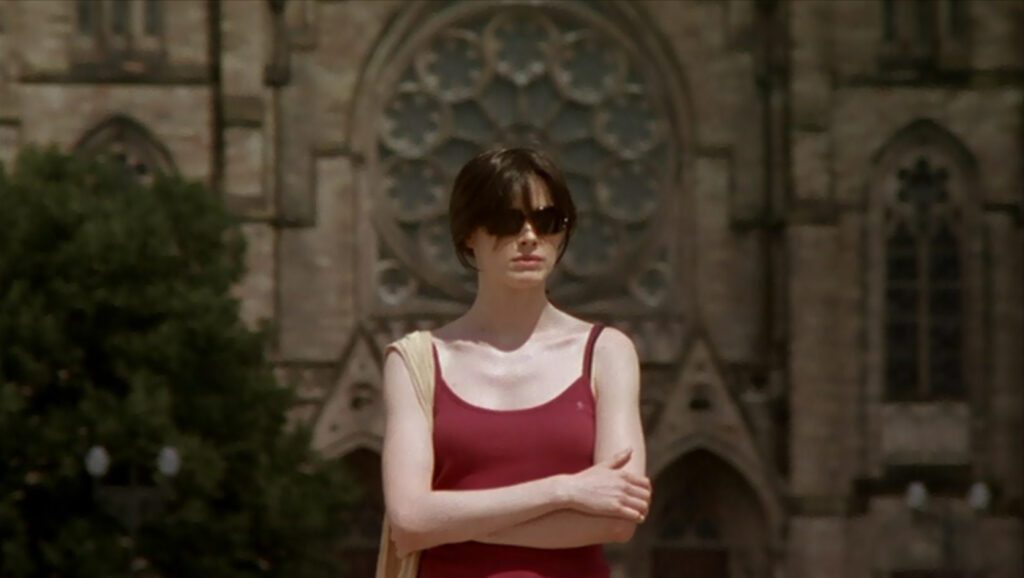
The story itself and its three-part structure speak more generally about history, but the opening shots suggest a journey through space more than through time. As daylight filters into the hotel room we’re shown a fold-up city map, on top of which is a second map in the design of a coaster from the Aviators bar. The next shot finds those two maps resting on a third, making a total of three layered maps: small, medium, and large.
Mirroring the three maps, the film takes place over three days, and the first day, which began with this image of maps, ends with the young man spilling coffee on a map. The first day passes quickly; it simply orients us to the streets and people of Strasbourg, to the main character, and to the café at the drama school which he uses his map to find. In this sense the first day is itself like a cinematic map.
The second day is much longer, taking up most of the film. Although we won’t see any more maps after the first day, it might be more accurate to say that the map comes alive. As the protagonist follows the young woman through Strasbourg we get a living three-dimensional map of the city. The long scene at the café preceding his chase is like a map of the people of Strasbourg, whom he sketches from various positions, trying to get the right perspective like a tourist studying a map from all angles. Finally he sees the woman he thinks is Sylvia, and he rises hastily to follow her. Just as he spilled coffee over his map on the first day, this time he spills beer over the street – over the living map.
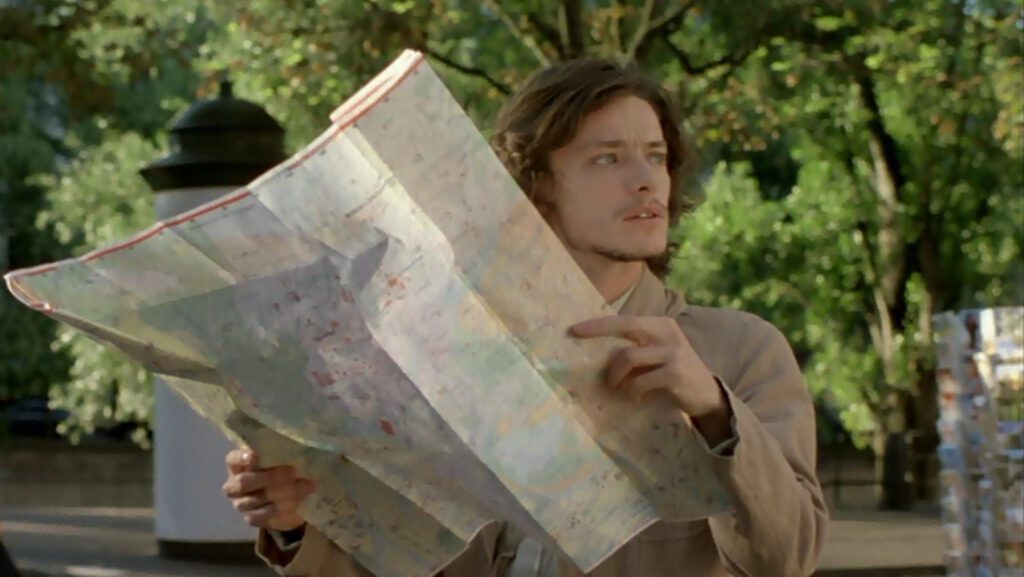
If the first day orients us like a map, and the second day brings the map to life, the third day is like a map of memories, filled with people, places, and actions we’ve already seen. The protagonist starts to follow another woman in a maroon dress, and the woman he had followed before appears briefly on the tram. He flips through his sketchbook like he did on the second day, the pages fluttering madly back and forth to show recognizable images from the past two days.
Describing the three days this way reveals a pattern. On the first day the young man lives in the future. He hopes to find Sylvia, a young woman he met at Aviators six years ago, but he’s thinking of the days ahead when he might re-encounter her. The map is an abstraction of the city, a symbol of his expectations. On the second day he lives in the present. First he’s absorbed in his drawings, then in the chase, and finally in his embarrassment. In the evening he consoles himself by going to the Aviators bar and picking up a goth woman. On the third day, as he observes the familiar sights of the city, he lives in the past. His hopes are laid to rest, and he becomes absorbed in a flood of memories.
On one hand this pattern describes the arc of a life. Children tend to think a lot about the future, what they and the world will be like when they grow up. They spend much of their time waiting and looking forward to things. As adults they live more in the present, becoming absorbed in their work and responsibilities. In old age people tend to look back more often at the past. On the other hand, the movie describes a cycle that recurs throughout life. We can deduce that the young man was drawn back to Strasbourg by a memory of Sylvia, so by ending with memories the movie brings him around full circle. Like anyone else, he may pass through the cycle again and again. The movie suggests a continuous dialectic that shapes our lives and our experience, that we alternate perpetually between living in the future, present, and past.
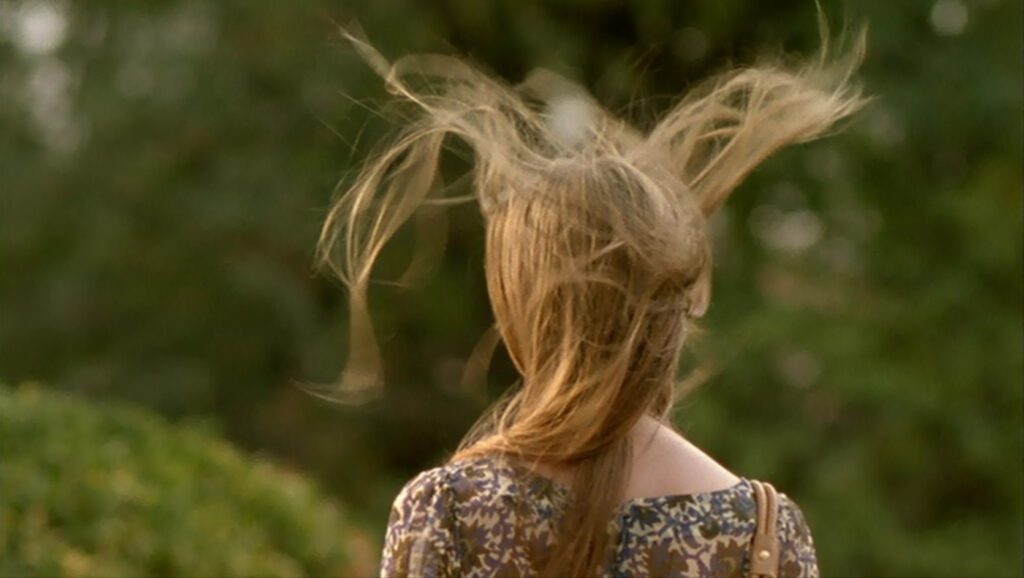
If this pattern describes the life of individuals, it shouldn’t be surprising to find it occurring on a collective level too, in the history of any group, nation, or even a continent. If the “City” in the title stands for modern Europe, that raises the question of what “Sylvia” stands for. For the young man Sylvia is a mirage of the past, a lost opportunity or a glimmer of happiness that he keeps dreaming about and pursuing. It’s ambiguous whether he finds her. The young woman denies she’s Sylvia, but she could just as well be lying as a polite way of rejecting him. In any case he never catches her. Countries and larger societies are also motivated by ghosts of the past, ideals or Golden Ages they long to return to but never quite manage to recapture.
The “Sylvia” in the title may represent the past, but the woman we actually see, whom the protagonist follows, is closely linked with the tram, the one futuristic thing in central Strasbourg. When she first appears in the café window the tram also appears in reflection. The tram often separates him from her, it’s where he speaks to her and she rejects him, and on the third day it’s the last place we see her. This living phantom of Sylvia represents Europe’s future, in the sense that it will continue cycling through these phases, living in the future, present, and past, as the young man does over the three days.
The movie is about the people of Europe, while the European Union, the organization that holds them together, looks on from the background as a recurring extra. He sells wallets and belts (spending and austerity) and lighters (change or action). Everyone ignores him, but by the third day the protagonist owns one of his lighters.
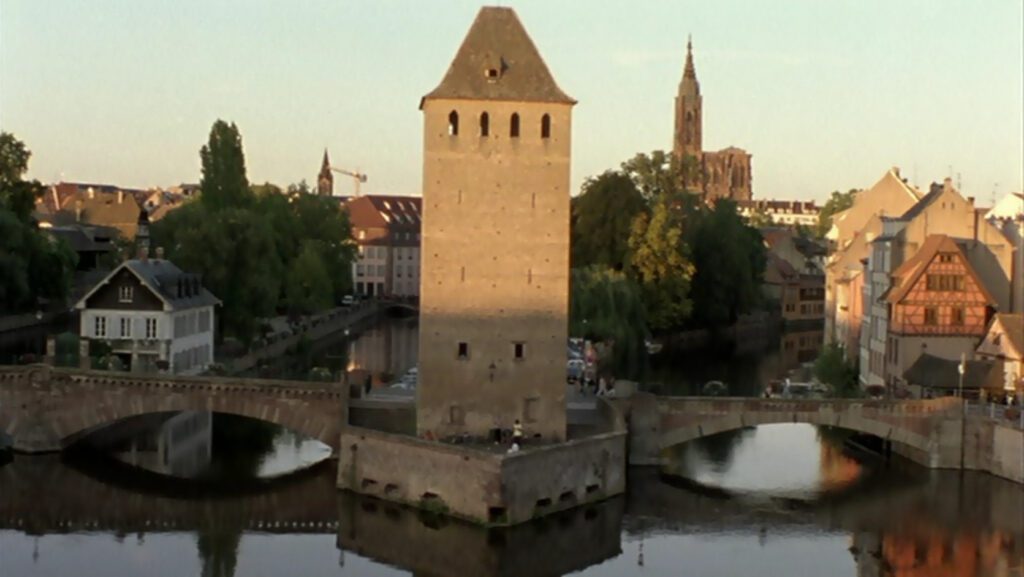
In the City of Sylvia does not give us a grand theory of history; rather it illustrates what we already know or intuit about history and puts it in perspective, so that we can reconcile ourselves to the difficulties of living through the turbulence of passing time and passing events larger than ourselves. The young man may never reach Sylvia, but that shouldn’t diminish the value of his life, which – as we see – is filled with abundant sights and sounds, culture and opportunities. As long as we’re sensitive to the wonders around us, we should be able to handle the disappointment of failed aspirations.
CONNECTIONS:
Late Spring – About reconciling to the endless cycles of historical change that disrupt our lives
The Servant – Long span of history collapsed metaphorically into a short period of time
Run Lola Run – Ambulation through a European capital with passers-by making recurring appearances; three-part structure